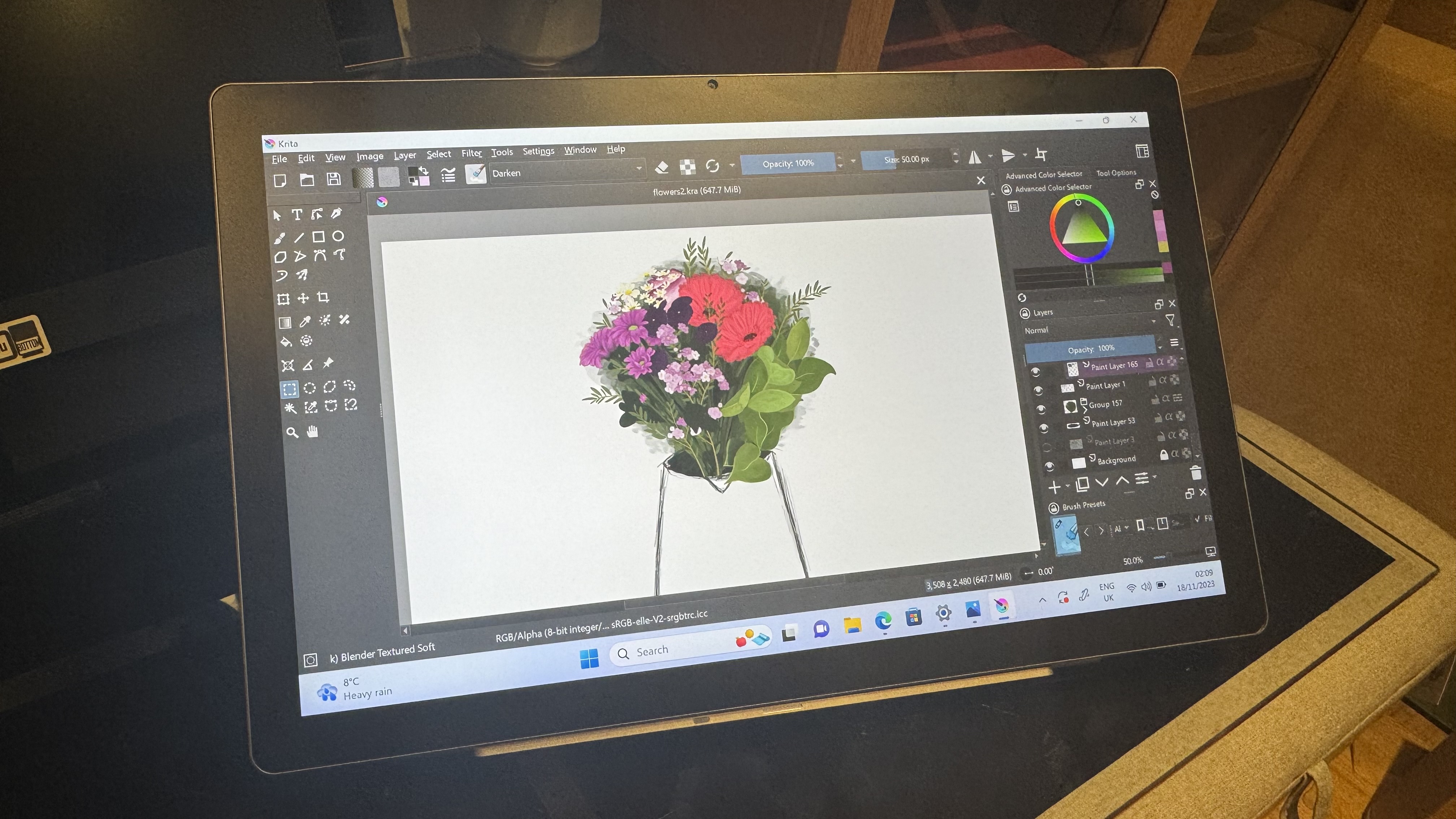
The Huion Kamvas Studio 16 is a game-changer in the drawing tablet market, finally offering some genuine competition to Wacom’s pen computer – and it’s two-thirds of the price.
That’s right, the slate pictured above is not, in fact, a Surface Pro; it’s Huion’s latest device, an all-in-one pen computer with some pretty impressive specs and great build quality - and it’s available for a respectable $1,699 / £2,199.99.
At this price, the Huion Kamvas Studio won’t be for everyone - not when there are so many affordable pen displays and pen tablets - and it’s doubly important to highlight this is a pen display first, computer second. If you’re a more casual artist wanting computing power with drawing capabilities as an added bonus, you’re far better off with Windows’ slate; the Huion Kamvas Studio is better as a drawing surface than it is a PC.
All in all, I’d say Wacom should be at least a little nervous to once more be losing its market dominance, now in the pen computer market. There’s no doubt this ranks among the best drawing tablets, offering a wonderful drawing experience, a vibrant screen with great colour accuracy, and a decent stylus.
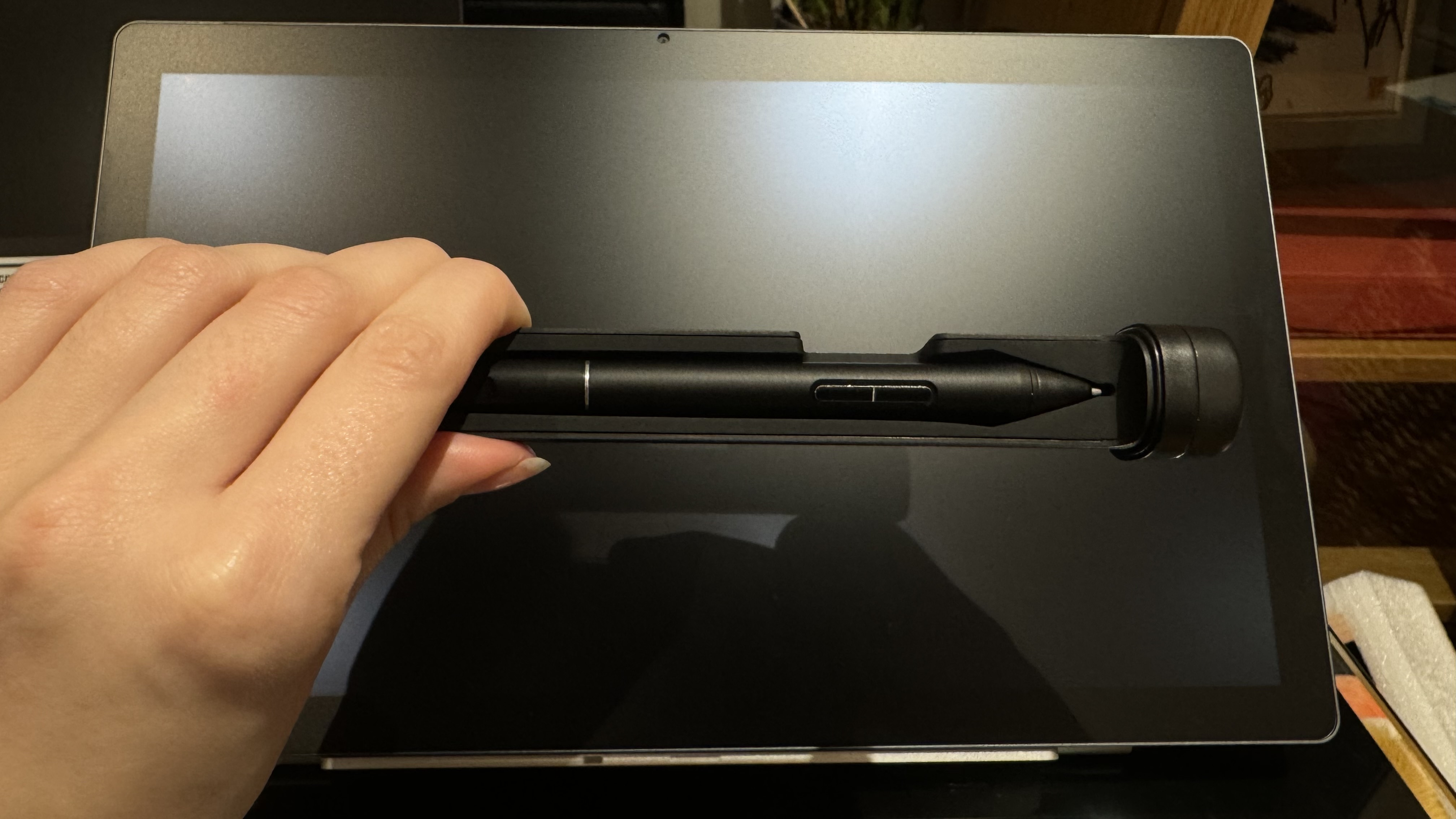
Huion Kamvas Studio 16 review: Key specifications
Huion Kamvas Studio 16 review: Design

You’d be forgiven for mistaking the Huion Kamvas Studio for the Surface Pro; it’s the spitting image, sporting a similar clean, chic aesthetic. Measuring 384 x 234 x 11.9mm, this 16-inch slate is simple and svelte. As well as Huion’s regular stand, the Kamvas Studio has an in-built kickstand, which allows for almost vertical orientation. Provided you’re not too heavy-handed while drawing, it’s pretty stable.
The screen is fully laminated and anti-glare with a wonderful smooth texture, offering a 2560 x 1440 (16:9) resolution. Framing the screen is a 1.8mm bezel, and the device is encased in metal, giving it a robust backbone. On the right side are two USB-C ports, and on the left side are the 3.5mm audio jack and volume controls. The on-off button (which doubles as a fingerprint scanner) is on the top-right edge of the device, and there are two cameras; a 5MP camera on the front and 8MP on the rear.
There are, disappointingly, no shortcut keys on the device, nor does it come with any external controls. This, in my view, is a major oversight. Sure, the screen is touch-sensitive, and you can connect peripherals to control the device, but as this slate is much more suitable for professionals with higher budgets, I’d have expected quick keys to help with workflows.
As well as the main slate, the Kamvas Studio also comes with a round pen holder, which houses slots for six replacement nibs under its cap as well as a nib removal tool in the main pen tray. The stylus included is the Huion Battery-Free Pen PW550S, which is fairly comfortable to hold with a good weight and a lightly tapered end, as well as two customisable shortcut buttons – a standard feature on contemporary styluses.
Huion Kamvas Studio 16 review: Performance
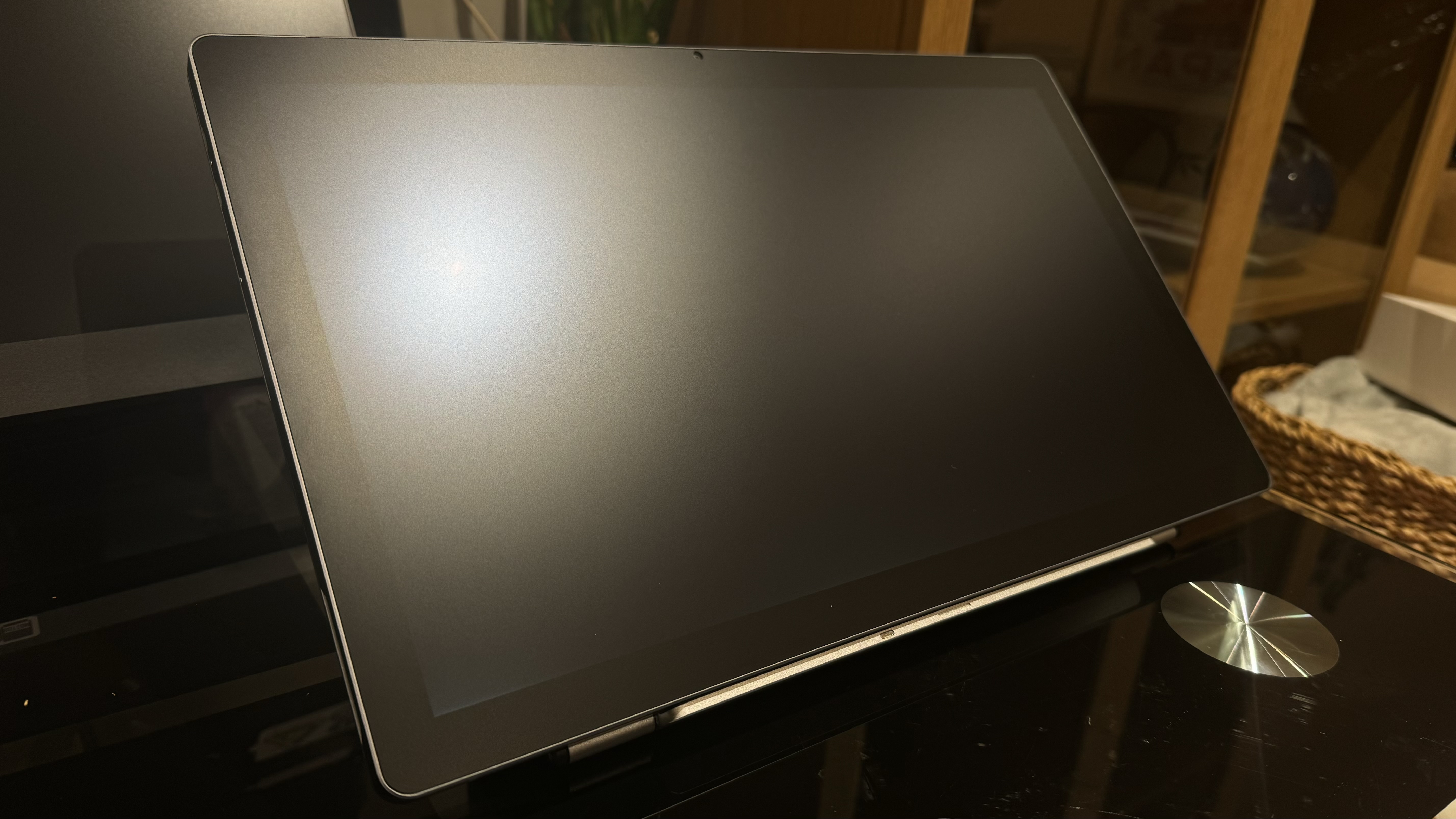
Setup for the Huion Kamvas Studio is much like any other Windows device; a quick set-up, some updates, and voila; you’re all set. The driver comes pre-installed, which is a nice touch, meaning you can dive straight into customisation. Granted, as there are no shortcut keys, there’s not an awful lot to do in the drivers – so let’s get straight to work.
The display is nice and bright, and it’s wonderful to draw on thanks to its excellent color accuracy, little-to-no parallax and lack of judder, connectivity issues and lag. However, while it’s more of an OS and computer spec problem, it is worth noting it’s not quite got the moxy to handle more power-hungry programs, and especially not concurrently, as well as a few lag spikes when importing/exporting files while running Photoshop. The stylus is nice and sensitive, and the only lag I experienced was when drawing layered, long brushstrokes; a not uncommon problem in any more affordable device. I definitely would recommend the felt over the plastic nibs, as the latter glides too effortlessly across the screen; the soft nibs provide perfect resistance. The screen isn’t 4K, which would have been a nice touch – and a huge triumph over Wacom – but I’m not too surprised, given it’s taken four years for any competition to take on the MobileStudo Pro.
I found the screen easy to work on over long periods, thanks to a combination of the anti-glare coating and brightness, but I did find myself repeatedly irritated by the lack of shortcut keys. I’m very used to drawing on pen displays with integrated shortcut keys, in fairness, but a lot of artists are - and it’s not even like you’ll have a connected laptop to hand to quickly navigate the screen. Instead, you have to fumble through the touch gestures, which is fine if you don’t mind regularly cleaning the smudges from your screen and can adapt easily, but I personally struggled a little.
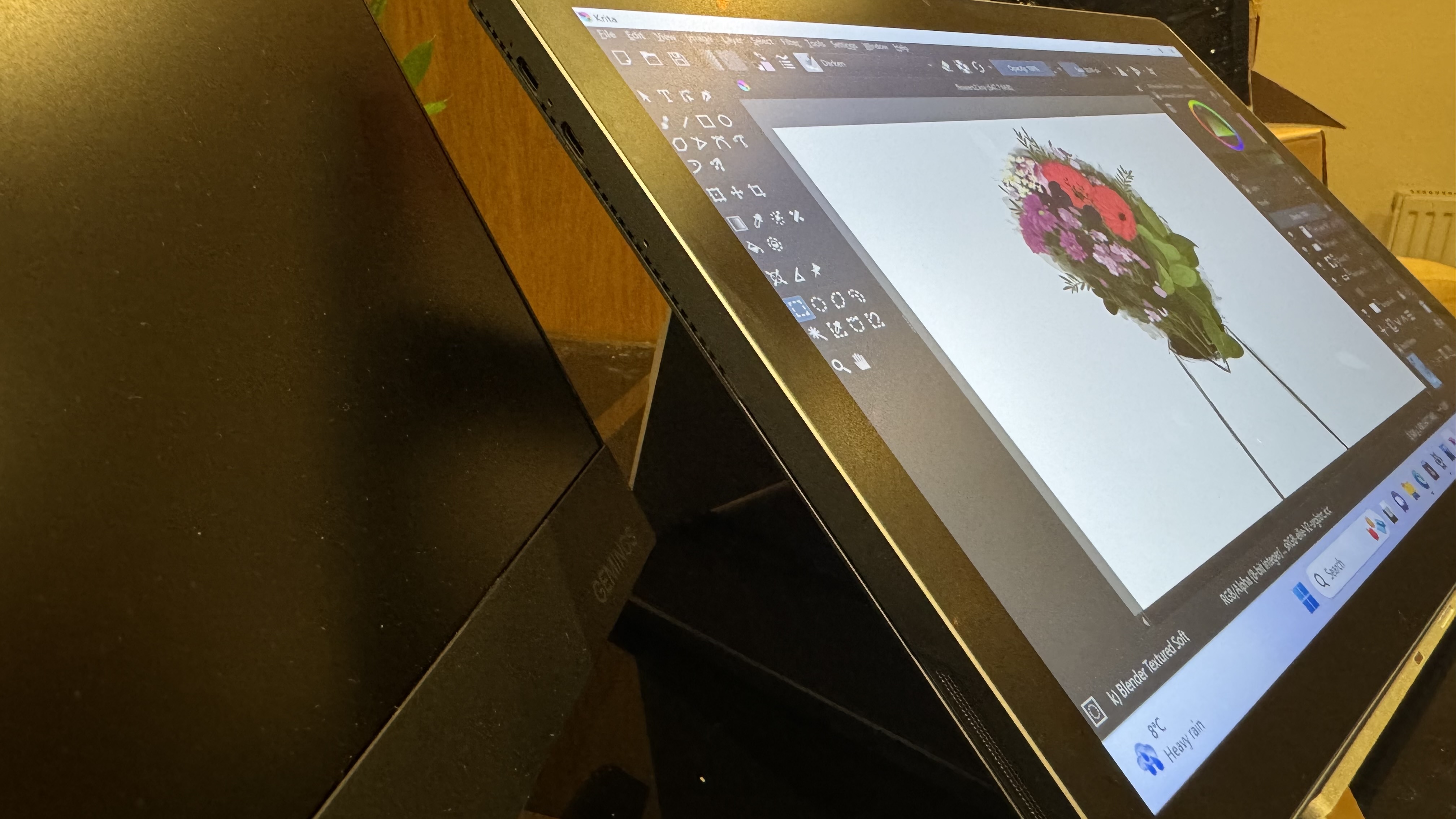
I barely used Huion’s foldable stand, favouring the in-built kickstand for the upright viewing angle it provides. There’s no grip, so invest in a mat if you intend to use the tablet on glossy surfaces. I didn’t personally experience any weakness in the kickstand hinge; however, it’s worth highlighting some customers have reported such issues.
As I mentioned before, the Kamvas Studio is more pen-first than computer, and as such its specs aren’t exactly show-stopping. However, it’s generally pretty accomplished, only struggling when processing media in the background while you use creative software. Under the hood, there’s an Intel Core i7 2.8Ghz CPU and an Intel Iris Xe GPU, as well as 512GB SSD and 16GB RAM. There are also a few nice value-adds to its artistic aims; a 5MP front-facing camera that’ll come in handy if you’re on the move and need to attend a meeting, an 8MP rear camera (I’m less certain how useful this is), and an in-built microphone. There are speakers on either side of the slate, but they’re not much to write home about.
Battery life is the largest chink in Huion’s armour here, an issue that also plagues Wacom’s pen computer. I rarely had the tablet set to more than 50% brightness and found it depleted within 4 to 5 hours rather than six (on full power, it lasts just 2 to 3 hours), and while it charges quickly (in just two hours from empty), it’s not ideal if your priority is using the tablet on the go. Plus, if you plug in peripherals like one of the best monitors for digital art, it’s going to drain even faster.
Huion Kamvas Studio 16 review: Price and models
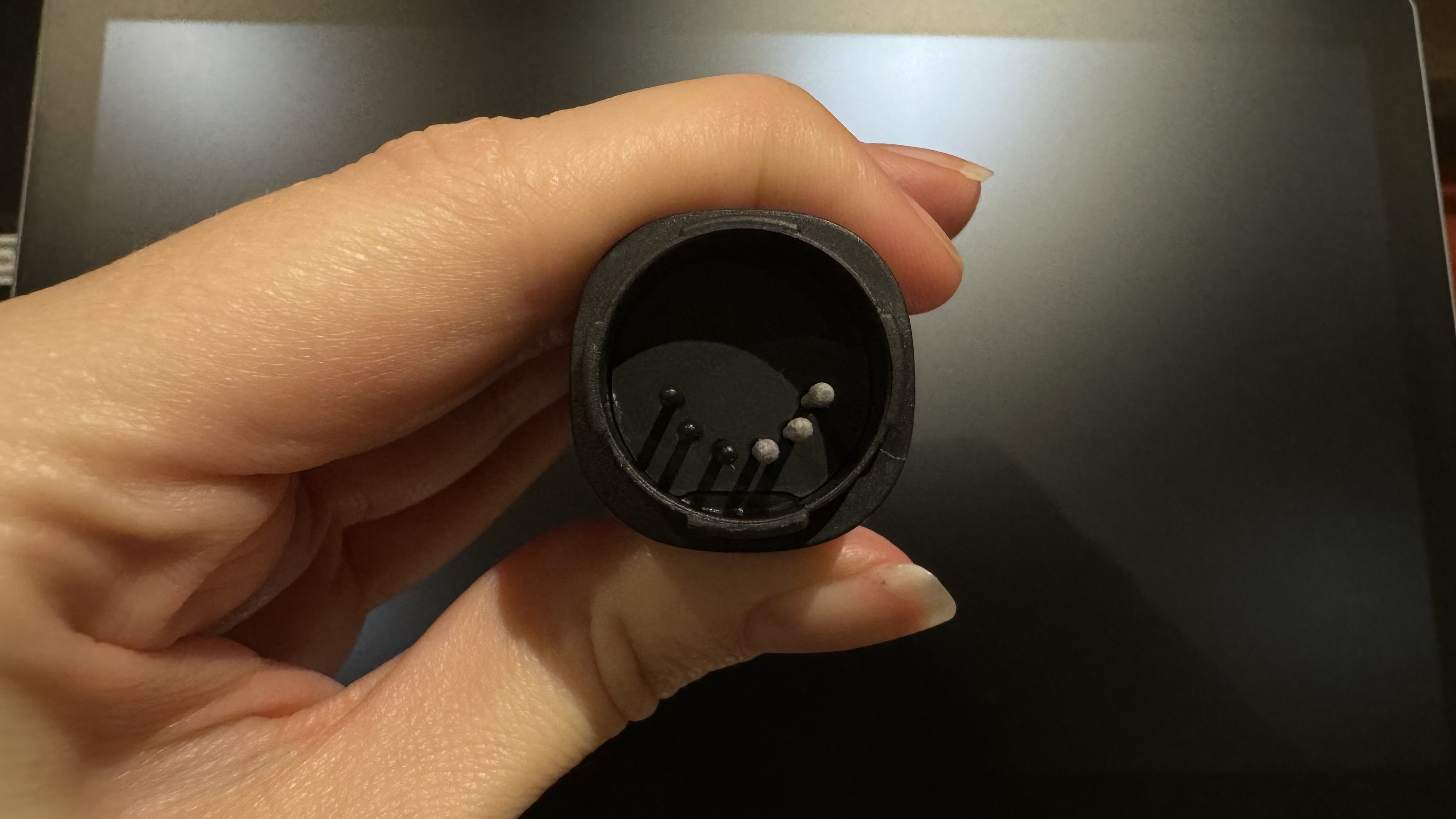
Huion sent me the Kamvas Studio 16 for review, which is the smaller of the brand’s new pen computers. This model sells for $1,699 / £2,199.99, which feels disproportionately expensive in the UK. Its larger, 24-inch sibling is $2,149 / £2,499.99. The only real alternative is Wacom’s MobileStudio Pro, which is $3,499.95 / £3,199.99.
While there are a few things we’d have liked to see included with the Huion Kamvas Studio (namely shortcut keys and a carry case), overall it’s a very well-equipped device. In addition to Huion’s foldable stand, there’s an in-built kick-stand, and it comes with the usual array of accessories; a drawing glove, screen wipe, power supply, Huion’s Battery-Free Pen PW550S, and a stylish pen-case, complete with three felt and three plastic replacement nibs.
Considering its limited competition, impressive specs, and performance, the value of the Kamvas Studio series is pretty amazing. I’d like to see a cheaper UK starting price for the 16-inch model, much better battery performance, and some shortcut keys for this price, but honestly, I’m being fairly harsh here; it offers great value for money in almost every department.
Should I buy the Huion Kamvas Studio 16?
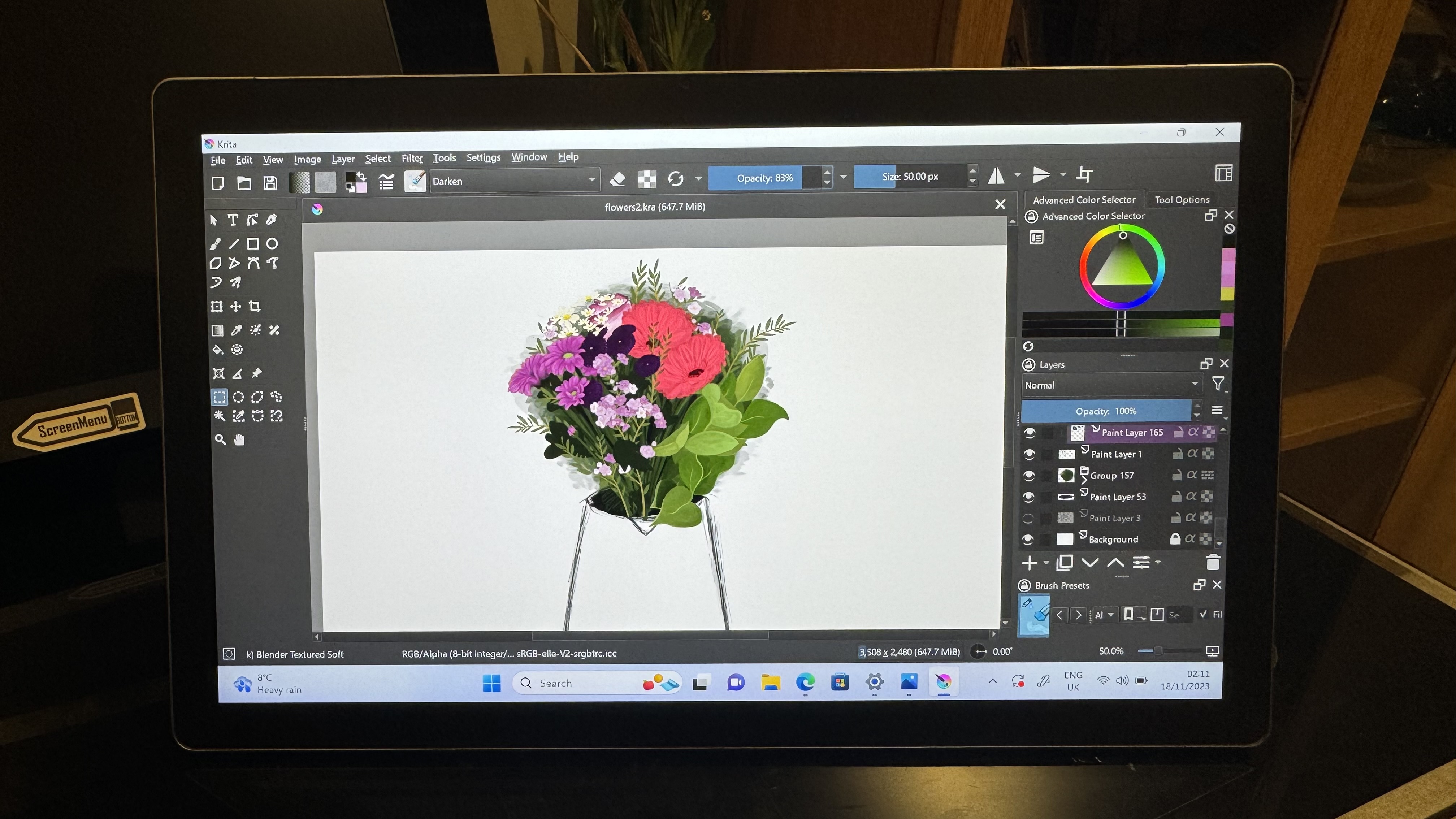
Huion Kamvas Studio 16 is up there with my favourite drawing tablets, especially for that it doesn’t crowd my workspace with wires. The price is a lot higher than the vast majority of the pen display and tablet competition, but understandably so; this machine can do so much more than extend your display and offer a drawing surface.
Still, it’s not for everyone. Would a professional artist find it easy to use 24/7? No, the lack of shortcut keys, low battery life, and slight lag when running intensive software would be problematic at times, especially if unused to using touch gestures on Windows tablets. However, any mid-weight artist or amateur looking to push themselves would find it more than suitable, as would anyone looking for something that can also offer the flexibility to complete general tasks they’d usually use a laptop when on the go.
If you fall into one of those categories, the Huion Kamvas Studio 16 is absolutely worth it.







